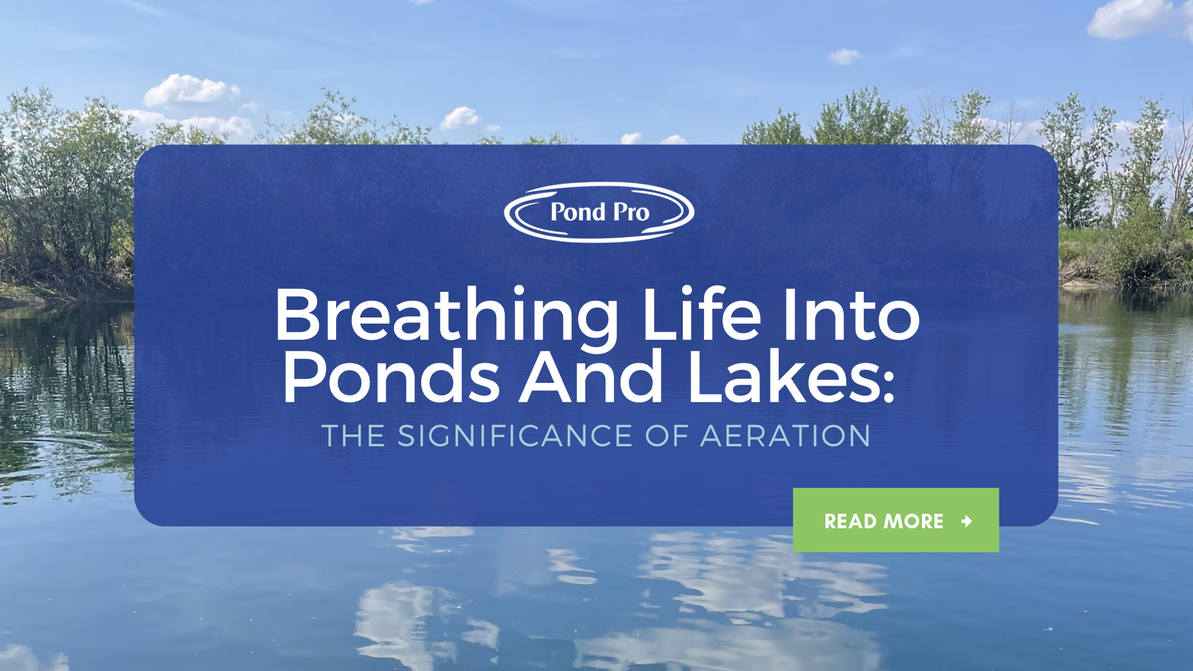Breathing Life into Ponds and Lakes: The Significance of Aeration
What is Aeration?
Aeration is a process that involves introducing air or oxygen into water. It's typically achieved using various equipment and methods, such as diffusers, fountains, or surface aerators. These tools help distribute oxygen throughout a body of water, giving aquatic life access to what they need to survive.
Why is Aeration Important?
1. Enhanced Oxygen Levels:
- Aeration increases the level of dissolved oxygen (DO) in the water. DO is essential for the respiration of fish, invertebrates, and other aquatic organisms. Check out our previous blog post on DO here.
2. Prevention of Oxygen Depletion:
- In still or stratified water, oxygen can become depleted, leading to "dead zones" where aquatic life cannot survive. Aeration helps prevents these dead zones by evenly distributing oxygen throughout the water column.
- In Canada and northern/mid USA, unaerated bodies of water experience turnovers twice a year (spring and fall). This turnover happens when the temperature shifts result in the “mixing” of water. While this can be beneficial, turnover can bring oxygen depleted water and toxic gases to the surface which can result in fish kills. Aeration destratifies the water and prevents this.
3. Water Quality Improvement:
- Aeration promotes water quality by:
- Decreasing ammonia. Ammonia is a waste product of fish and high levels of ammonia (1.0 ppm or more) can have a caustic effect on a fish's gills, causing damage and even swelling.
- Decreasing hydrogen sulfide. When sulfur containing compounds are decomposed, hydrogen sulfide is released. Therefore, because sulfur producing bacteria are usually strictly anaerobes (don’t like oxygen), increasing the amount of oxygen in a water body can help decrease sulfur levels and subsequently hydrogen sulfide levels.
4. Control of Algae and Weed Growth:
- By increasing the availability of oxygen, aeration limits the optimal growth conditions for algae and weeds, keeping your water clear and beautiful.
5. Temperature Regulation:
- Aeration can help regulate water temperature by mixing the water column. This is especially important in shallow ponds and lakes, where temperature fluctuations can be extreme and dangerous for aquatic life.
6. Fish Health and Growth:
- Fish are particularly sensitive to changes in oxygen concentration, and low DO levels can lead to stress, reduced growth rates, and even fish kills.
Conclusion
Aeration is a process that can improve water quality, help with algae control, and ensure fish health and ecosystem balance.
Pond Pro sells a variety of aeration systems for ponds, lakes, dugouts and lagoons. Be sure to check them out or contact our team if you have any questions!
Recent Posts
-
Top Gift Ideas for Pond Owners: Practical, Fun & Perfect for Any Season
With the holiday season quickly approaching, it’s the perfect time to start thinking about meaningfu …4th Dec 2025 -
De-Icing System Sizing Guide: How to Pick the Right System for Your Pond or Dock
Learn how to size, install, and position a pond or dock de-icer for cold climates. Protect your fish …28th Nov 2025 -
Winter Survival Guide for Pond Fish
Winter Survival Guide for Pond Fish How to keep your fish healthy, oxygenated, and stress-free all w …18th Nov 2025




